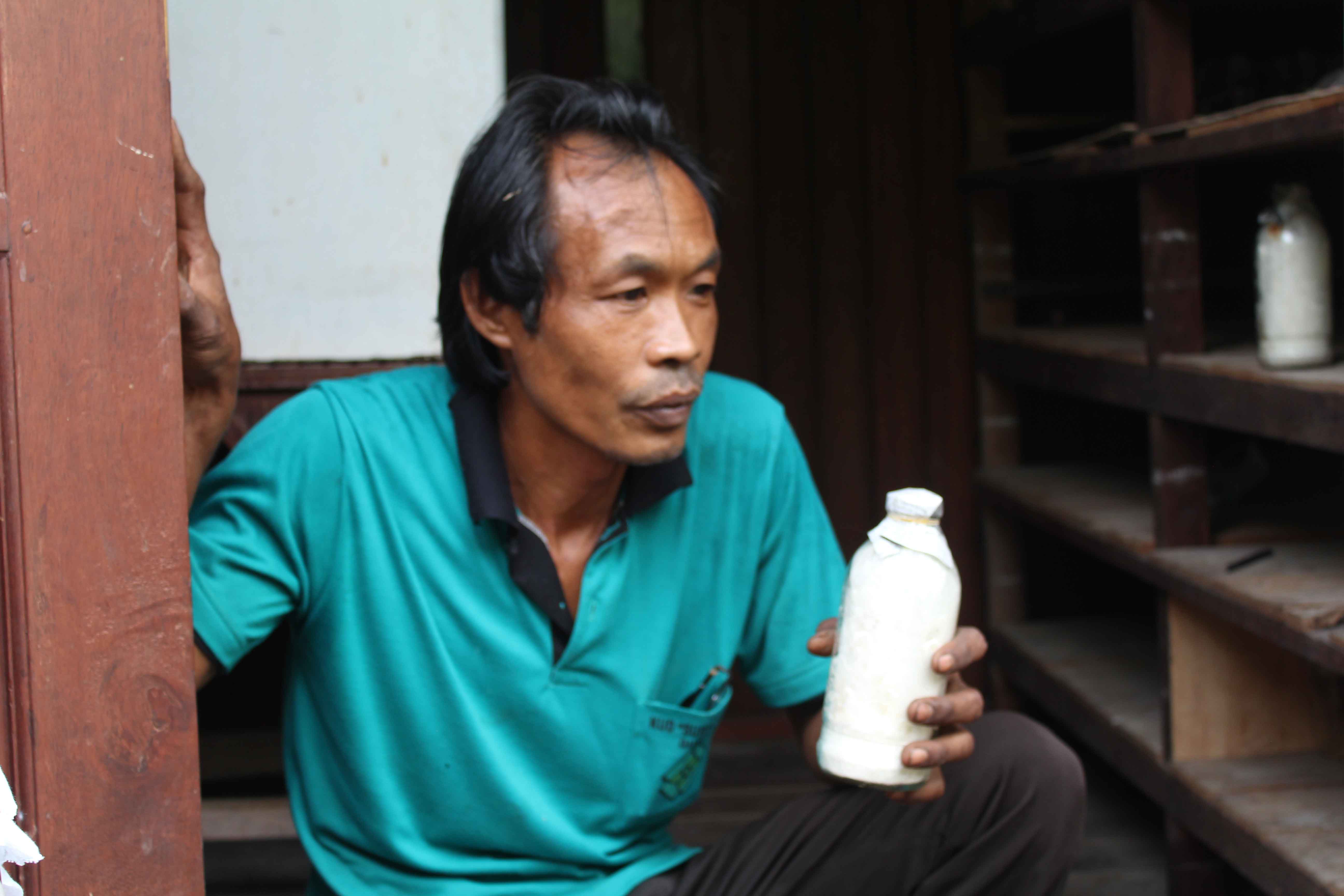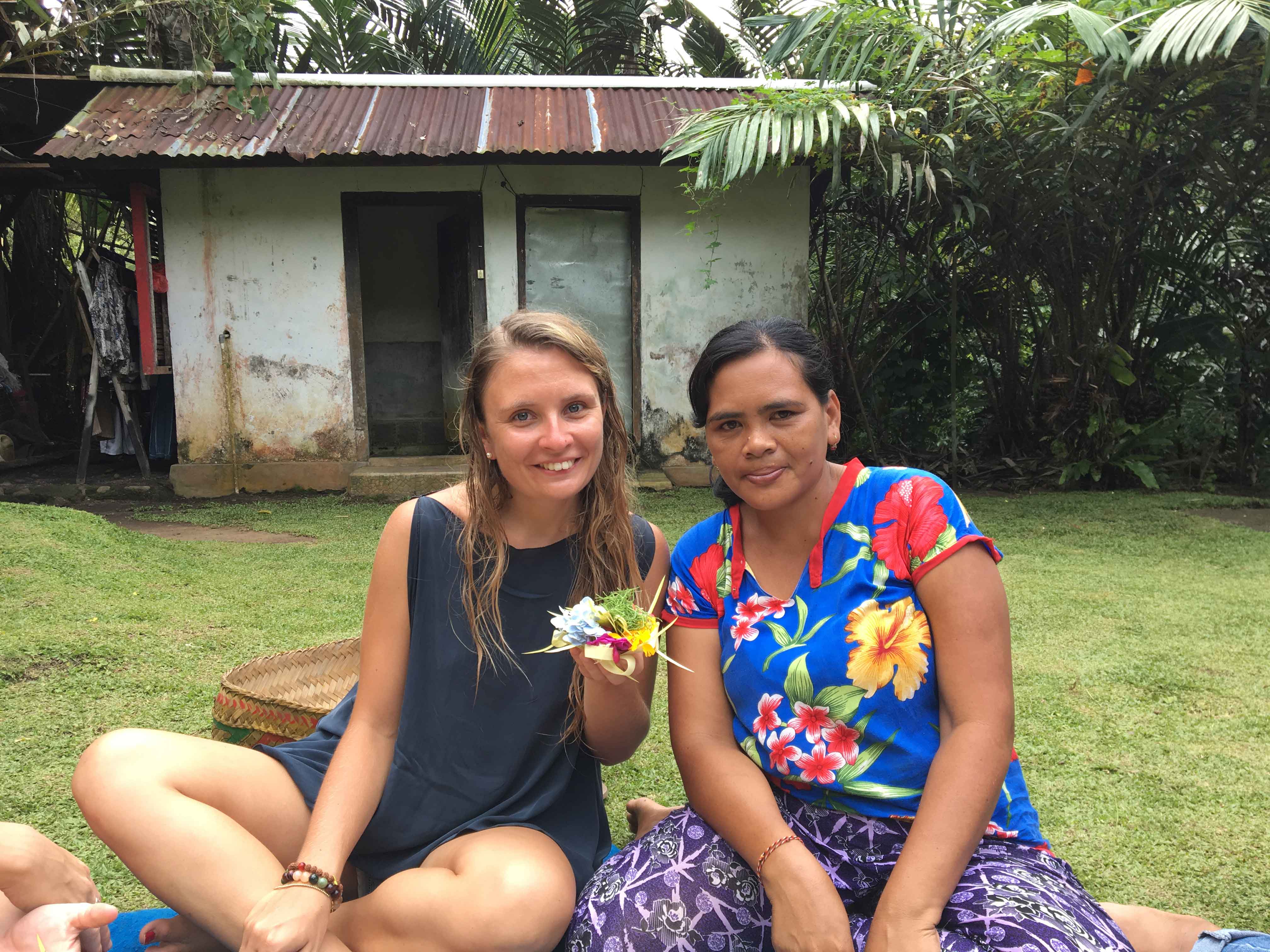My life in Bali is just made of incredible experiences and inspiring encounters. Last weekend was one of those times, when my co-working space Dojo Bali organized a trip to West Bali with the Five Pillar Foundation. I didn’t really know what to expect, I only knew that the area was a sort of hidden gem in the island, a place where tourists don’t go and locals still live the traditional way. What I immediately noticed when we got there is the immense beauty and dominance of nature: unlike the other densely populated areas I had seen before, this region of Bali seems more preserved and wild, with palm tree forests everywhere. I definitely had the feeling I was exploring the true essence of the island.
The Five Pillar Foundation supports rural Balinese communities in fulfilling their potential from an economic, social, environmental, educational and cultural point of view. On one hand, they help local entrepreneurs in getting a better exposure to the market, on the other hand, they have a very strong youth educational program to create jobs beyond hospitality and tourism.
They also build an international bridge by organizing trips to rural villages where the visitors can experience the Balinese traditions and values, while inspiring the locals with new business opportunities.
Banjar, community life
Our weekend was a full immersion into local knowledge, traditions and culture. Our guides were Wira, the co-founder of the Five Pillar Foundation, and Ngurah. Both young men are from West Bali and they are committed to preserving the island and its treasures. They told us how Balinese believe there are 3 types of relationship: with other humans, with nature and with the Gods. This is no big surprise for this spiritual, peaceful and respectful society.
But one thing had already caught my attention at the tooth filing ceremony: the importance of community life, or banjar. For centuries, the inhabitants of the island have had a system of mutual help and compassion: in the busiest time of specific harvests the entire village assists the farmers, expecting the same in return when they need it. If a family has a joyful celebration or mourning, everybody joins and supports them. The ones who don’t take part to those activities become outsiders and lose the help from the banjar. It looks to me like a sort of idyllic community life and I hope the Balinese will be able to preserve it despite the modern times.
For what concerns the relationship with nature, we learnt about the Subak, the ancient irrigation system of the island that is still in place and distributes water coming from the mountains equally to all the villages. We also heard about challenges the farmers had to face and are still facing since the introduction of pesticides in the 70’s. The Five Pillar Foundation is also committed to preserve the traditional cultivation methods that are better for our health, as they are organic, and better for the ground, as they have been in place for centuries.
Meeting with inspiring entrepreneurs: between modernity and tradition
One of the highlights of those days was meeting local entrepreneurs that are part of communities the Foundation supports by giving them better exposure to a bigger market. The idea is to promote economic growth and development of the region by fostering the traditional jobs and productions.
It was like being part of “Charlie and the Chocolate Factory” when we tried to make chocolate bars in a chocolate factory and felt in heaven when a holy coconut oil producer gave each of us a massage. We heard the incredible story of how a very creative mushroom farmer got a message from a God in a dream that inspired him to invent a special water filter made of clay coming from 4 sacred areas of Bali. We tasted snake fruit directly from the trees in a plantation and we ate fresh fish in the most beautiful setting of all, facing a palm tree forest ending in the ocean at sunset.
Those entrepreneurs opened their homes, farms, factories and hearts to us, they told us about how they keep the tradition of their ancestors alive, how they follow natural cycles for their 100% organic, fresh and top quality products. It was really inspiring for me to meet them because they were all doing their jobs with great dignity, courage and humility. They felt so proud of their simple products and looked very happy in their uncomplicated lives. I think we have a lot to learn from them and I would really like to support this kind of projects by offering my time.
A true co-giving experience with the kids of the Five Pillar Foundation
The following day was in the spirit of co-giving: it was our turn to do something for the community. We went to the Five Pillar Foundation headquarter, where they have a recreation centre for the youth. The idea was for us to tell something about our lives, jobs and countries, to inspire approximately 50 kids between 15 and 25 and help them practicing their English. What I found really surprising was that, when asking what did they want to become, most of them said they wanted to get jobs in hotels in Kuta, one of the most touristic towns of the island. They didn’t dream big and didn’t think there could be so much more! This is why I think the Foundation has a very important role in giving them hope and showing them that another life is possible. If all the young people from the region worked in hospitality, there would be no development and all the traditions would get lost.
The kids seemed very excited to meet foreigners and get a different perspective, some of them were really shy and didn’t dare asking questions. Some of them even joined us for lunch and we all enjoyed the afternoon swimming in a river by a snake fruit farm. The atmosphere was so playful and joyful that it was a real shame it had to end.
The art of Canang, or the essence of Bali
We said goodbye to the kids but our day was not over, as we had the incredible opportunity to learn how to prepare the offerings, or Canang. If you have been to Bali, you will have seen that the women put little baskets with flowers, incense and some food in front of every door and crossroad. Those are the offerings they make to protect from the devil. But we learnt there is another type of offering, for the Gods in the temples. It consists of a similar basket made of an interweaved leaf and it only contains flowers and incense. A very nice woman taught us how to create and fill it with the right flowers. It was quite hard to follow her skilled hands when interweaving the leaves, but with some help we made it and we were then able to go to a temple and leave our offerings. We also got the blessing from the priest: holy water and some rice on our head, forehead and throat.
It was incredible because it is very rare that visitors have access to the most authentic spiritual aspects of Bali with the locals. Like when I went to the Kerambitan Palace, I felt very fortunate that I was able to experience such a moment.
During this weekend so many people opened their homes, farms and hearts to us, we felt strong connections most of the foreigners miss when in Bali. But what I think was the most important aspect was that I opened my eyes on the reality of the island. I realized that there can be no development without tourism, but it is also vital to respect and maintain those ancient values that made this place so special. The Five Pillar Foundation has a very important role in building this bridge between local and international and making a sustainable development possible.
To learn more about the Five Pillar Foundation and their activities or if you wish to support them, visit their website.













